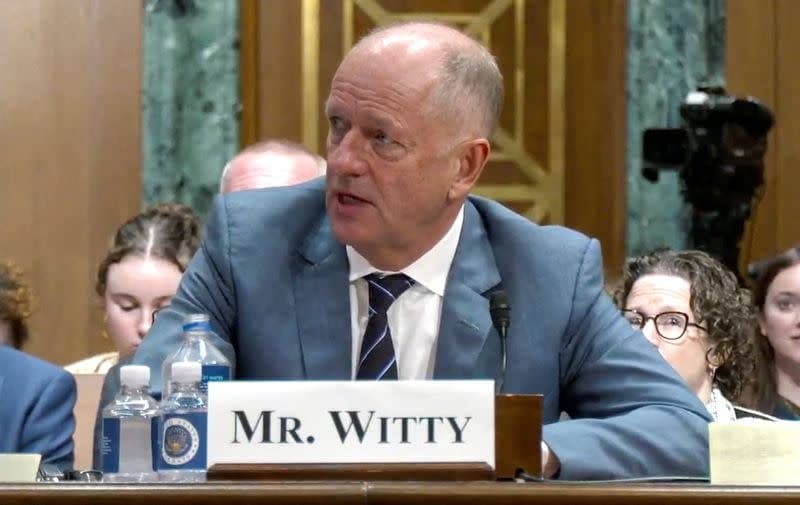UnitedHealth CEO Shakeup: Navigating Rising Medical Costs and Market Turmoil
Explore how UnitedHealth Group’s CEO transition amid soaring medical expenses impacts investors and the healthcare sector, revealing critical insights into leadership, market reactions, and future growth prospects.

Key Takeaways
- UnitedHealth CEO Andrew Witty resigned abruptly for personal reasons.
- Stephen Hemsley, former CEO, returned to stabilize the company.
- Rising medical costs, especially in Medicare Advantage, pressured earnings.
- Shares plunged over 15%, dragging down healthcare peers.
- UnitedHealth expects to return to growth in 2026.

In a stunning move on May 13, 2025, UnitedHealth Group, the largest U.S. health insurer, announced the sudden resignation of CEO Andrew Witty, citing personal reasons without further detail. This leadership shakeup comes amid a storm of challenges: a tragic CEO murder within its ranks, a massive cyberattack affecting millions, and soaring medical costs that have battered earnings and investor confidence. The company simultaneously suspended its 2025 forecast, sending shares tumbling over 15% to a four-year low. Stepping back into the CEO role is Stephen J. Hemsley, the architect behind UnitedHealth’s previous growth surge, tasked with steering the company through turbulent waters. This article unpacks the financial and operational upheaval, explores the market’s reaction, and offers insights into what this means for investors and the broader healthcare industry.
Understanding Leadership Turmoil
Leadership changes at the helm of a giant like UnitedHealth Group rarely happen quietly, and Andrew Witty’s sudden resignation on May 13, 2025, was no exception. Officially stepping down for "personal reasons," the move came on the heels of a turbulent period marked by unprecedented challenges. Witty, who took over in 2021 after leading GlaxoSmithKline, faced a perfect storm: the tragic murder of Brian Thompson, CEO of UnitedHealthcare, in late 2024, a cyberattack disrupting systems for nearly 190 million people, and rising medical costs that squeezed profits.
The abruptness of Witty’s exit surprised many, including investors and industry watchers. Some speculate the intense pressure—from operational hurdles to personal safety concerns following the violent loss of a colleague—played a role. UnitedHealth’s choice to reinstate Stephen Hemsley, its former CEO and current chairman, signals a strategic pivot to steady the ship. Hemsley’s deep institutional knowledge and prior success in expanding UnitedHealth’s empire make him a natural choice to navigate this stormy chapter.
Decoding Rising Medical Costs
At the heart of UnitedHealth’s recent woes lies a surge in medical costs, especially within its Medicare Advantage segment. This government-backed plan for seniors and people with disabilities has seen unexpectedly high expenses as more seniors seek care post-pandemic, including costly procedures like joint and hip replacements. These rising costs have pressured UnitedHealth’s bottom line, leading to its first earnings miss since 2008 and forcing the company to pull its 2025 financial forecast.
This isn’t just a UnitedHealth problem; the entire health insurance industry has felt the pinch. However, rivals like Humana and Elevance Health report more stable cost trends, suggesting some company-specific factors at play. UnitedHealth noted increased demand from new members and those with complex conditions, broadening care types beyond initial expectations. This complexity challenges the myth that healthcare costs are purely external forces—leadership decisions and operational agility clearly influence outcomes.
Navigating Market Reactions
The financial markets reacted swiftly and sharply to UnitedHealth’s leadership upheaval and forecast suspension. Shares plunged over 15% to a four-year low, wiping out nearly $190 billion in market value since the earnings miss in April. This selloff rippled across the healthcare sector, dragging down peers like CVS Health, Elevance Health, and Humana by more than 3% to 6%.
Investor anxiety is palpable, reflecting fears that rising medical costs and operational challenges could spread beyond UnitedHealth. Yet, some analysts point out that other insurers have not seen the same surge in demand or costs, hinting that UnitedHealth’s struggles may be more company-specific than systemic. This episode busts the myth that all healthcare stocks move in lockstep—nuance matters. For investors, the key is discerning which challenges are industry-wide and which stem from internal missteps.
Stephen Hemsley’s Stabilizing Role
Bringing back Stephen Hemsley as CEO is a calculated move by UnitedHealth to restore confidence. Hemsley, who led the company from 2006 to 2017, is credited with transforming UnitedHealth into a $400 billion healthcare conglomerate. His leadership expanded the company’s services beyond insurance into pharmacy benefits, physician groups, and data management—diversification that has helped buffer against insurance market volatility.
Hemsley expressed gratitude for Witty’s leadership and optimism about returning to long-term growth targets of 13 to 16 percent by 2026. While some analysts view his appointment as a temporary stopgap, his deep experience and institutional memory position him well to address current challenges. His return underscores the importance of seasoned leadership in times of crisis, reminding us that navigating complex healthcare dynamics requires both vision and steady hands.
Investor Insights and Outlook
For investors, UnitedHealth’s recent developments are a cautionary tale and a call to action. The sudden CEO change and suspended guidance highlight near-term risks tied to escalating medical costs and operational hurdles in Medicare Advantage. Yet, Hemsley’s return offers a stabilizing influence, given his track record and intimate knowledge of the company’s inner workings.
Investors should watch how UnitedHealth manages cost pressures, regulatory scrutiny, and public perception moving forward. The healthcare sector’s structural challenges are real, but UnitedHealth’s diversified portfolio and experienced leadership provide a pathway to recovery. The company’s expectation to return to growth in 2026 signals a long game, reminding us that resilience in healthcare finance is about adaptability, accountability, and strategic foresight.
Long Story Short
UnitedHealth’s abrupt CEO departure and forecast suspension spotlight the harsh realities of today’s healthcare landscape—where rising medical costs and operational disruptions collide with investor expectations. Yet, the return of Stephen Hemsley, a seasoned leader credited with transforming the company into a $400 billion powerhouse, offers a beacon of stability and hope. For investors, the road ahead demands vigilance: monitoring cost management, regulatory scrutiny, and public perception will be key to regaining momentum. The healthcare sector’s challenges are systemic, but UnitedHealth’s diversified portfolio and experienced leadership provide a pathway to rebound. As the company eyes growth in 2026, this episode reminds us that leadership matters deeply in navigating financial storms, and adaptability is the currency of survival in complex markets.